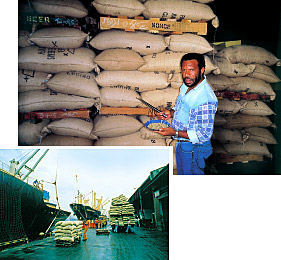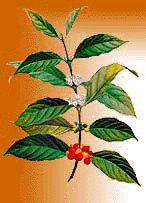 LALEs COFFEE GROW PAGE
LALEs COFFEE GROW PAGE
 LALEs COFFEE GROW PAGE
LALEs COFFEE GROW PAGE
from a red berry to a green bean
![]()
The coffee plant is fragile and neads good care. It likes a continuous warm weather but it does not like a lot exposure to the sun. It can survive a less cold climate but it cannot stand wind. A humid weather makes it grow quickly but to much wetness ruins it. So it is good to have big trees close
by to protect them against the sun and the wind. (In Java they call these trees Coffee Mother Trees)
Arabica coffee plants take about 5 years to mature and produce their first crop.

the coffee-belt
The coffee plants grows in the Tropics, the area between capricorn and cancer.
Coffee has two main varieties: Arabica and Robusta.
Arabica is descended from the original Ethiopian coffee trees. The coffee made from this variety is mild and aromatic. It's the king of coffee and accounts for about 70 percent of the world's coffee production. These coffee trees grow best in higher altitudes, between 600 and 1,800 m. Mild temperatures (16 to 24 degrees Celsius) and about 150 cm of rain per year ensure arabica's growth. Heavy frost will kill arabica coffee trees.
Robusta coffee trees represent about 30 percent of the world's market. The bean is smaller and rounder than an arabica bean. Robusta is a heartier plant and can withstand warmer temperatures, up to 29 C. It can also thrive at lower altitudes than arabica. Robusta beans produce a bitter-tasting coffee with about 50 percent more caffeine than arabica. You'll find robusta coffee trees in Southeast Asia and Brazil.
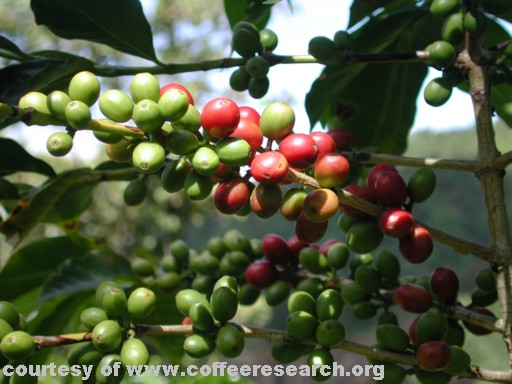
Coffee berries start as green berries in early stage of growth, turns yellow, red, then dark crimson when it is finally ripe.

we say coffee beans although it comes from berries.
It's because each coffee berry has two beans
The skin of a coffee cherry is thick and bitter. However, the fruit beneath it is intensely sweet and has the texture of a grape. Next comes a slimy, honey-like layer, which helps protect the beans. The beans themselves are covered by a parchment-like envelope. This protects the two, bluish-green coffee beans, which are covered by yet another membrane, called the silver skin.
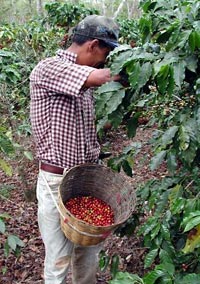
There is usually one coffee harvest per year. North of the equator, harvest takes place between September and March, and south of the equator between April and May. Coffee is generally harvested by hand, either by stripping all of the cherries off the branch at one time or by selective picking. The latter is more expensive and is only used for arabica beans.
Coffee pickers can pick between 45 and 90 kg of coffee cherries per day. Only 20 percent of this weight is the actual bean.
Once picked, the coffee cherries must be processed immediately. This is done in two ways:
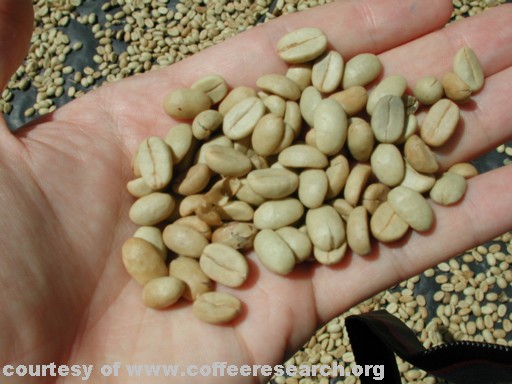
Coffee is shipped unroasted. This is called green coffee. Mostly it is stored in bags made of jute or sisal. About 7-million tons of green coffee are shipped worldwide each year
